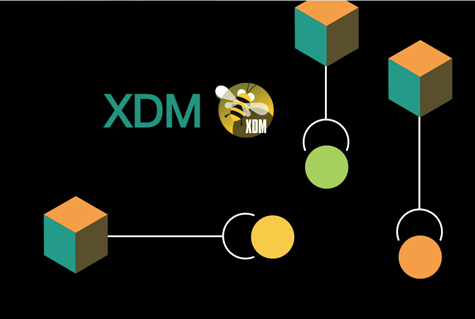The fully automated provision of test data not only saves time, but also simplifies processes in general and thus relieves the development department and project teams.
There are fewer delays in software testing and the continuous development of applications runs more smoothly. So what are the practical implications? Below we outline how this might play out at a large insurance company.
As is usual with many banks and insurance companies, in our example all the essential applications were developed in-house, e.g. for claims management, task management, contract management, and so on. All this is developed on z/OS with a Db2 database. The test data required for these applications was extracted from various levels by an in-house developed application and compiled semi-automatically.
This in-house application some ISPF panels with which various functions could be controlled, e.g. to transport the data for customer number x from environment A to environment B.
The ISPF application was not specifically developed for testing and it could (and should) only be used by a few experienced developers. Therefore, an e-mail interface was set up.
If a developer or tester required a test case, e.g. a certain contract with all its attached information, then he/she sent the order by e-mail to a group mailbox.
The incoming orders were processed one by one by three experts. To manage these requests, they had built themselves some Excel spreadsheets. This procedure is a rather time consuming and labor intensive approach.
Together with the insurer, a web portal was created as a central entry application. Behind this are the corresponding applications of the UBS Hainer TDM Suite for automated test data procurement.
Where appropriate, the rules or patterns of the previous processes were integrated into the new solution. Test data can now be obtained via the portal that cover all essential areas, such as customers, contracts, damages, events, sales opportunities, etc.
Today, agile iterative testing is used. The structure provides for three layers: Firstly, there is the production layer. Secondly, there is an integration layer with development and test environments involving different constraints. The third layer is the development environment with five to six environments that are updated at different times. This layer defines when and how deployment takes place and according to which rules the data is handled.
The UBS Hainer TDM Suite was used to optimize the initial situation. This had two advantages:
- All required test case data – in production quality – can now be accessed at any time by each individual developer and tester via a central web portal.
- At the same time, the entire system is gradually being converted from a mainframe to a distributed database – in this case from Db2 to Oracle.
Conclusion: Together with UBS Hainer, the insurance company gained a high degree of independence, a massive increase in speed of development turnover, and in the process took an important step towards more flexible, future-oriented technologies.


